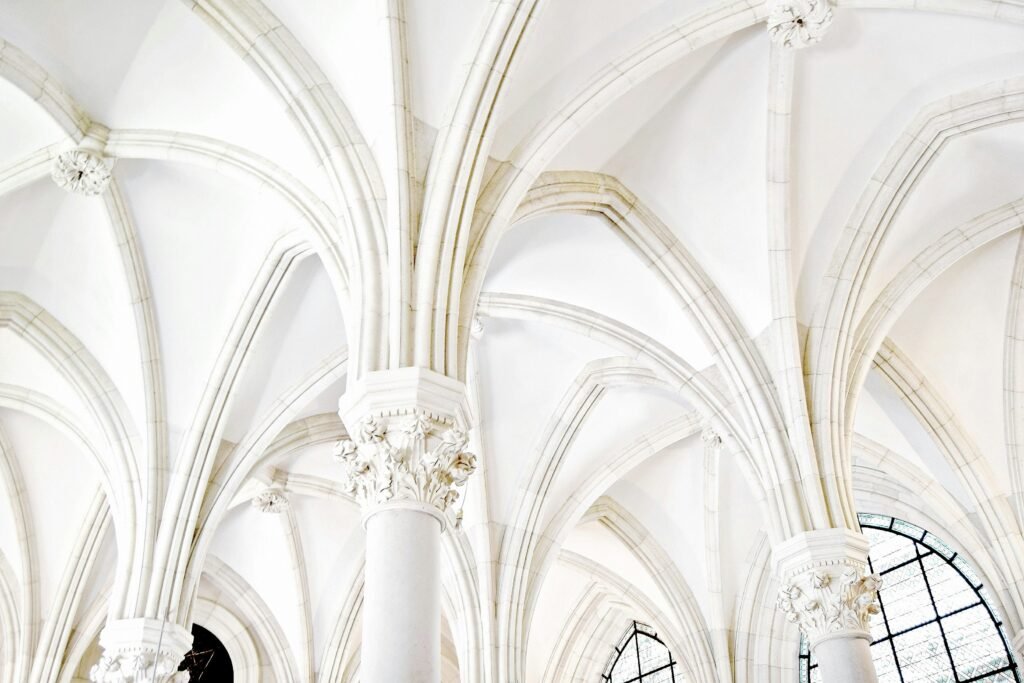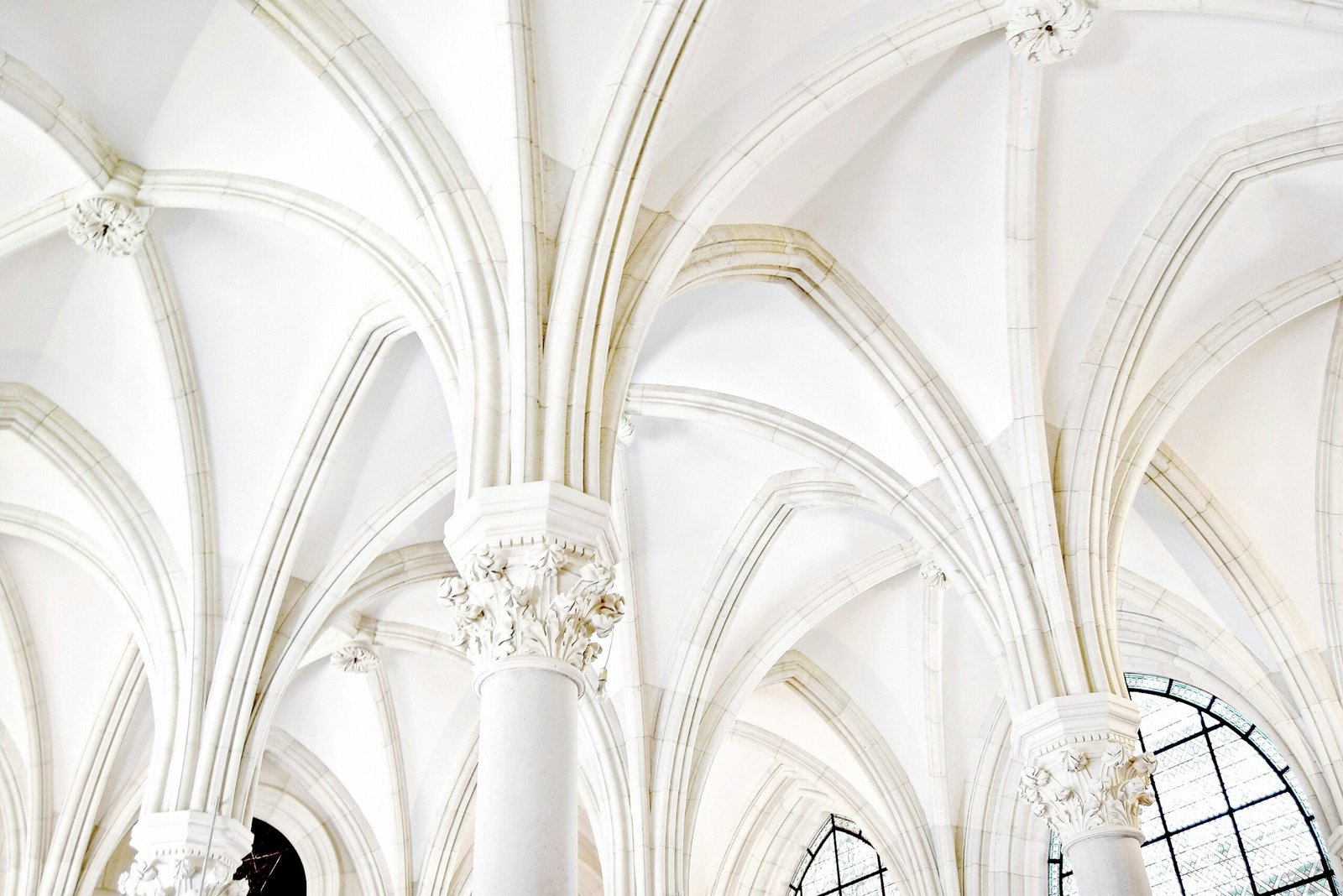Cape Town, a city renowned for its natural beauty and vibrant culture, is also home to a plethora of historic neighborhoods that exude charm and character. From the quaint cottages of Bo-Kaap to the eclectic streets of Woodstock, these neighborhoods offer a window into the city’s rich history and captivating past. With their well-preserved architecture, vibrant community spirit, and Proximity to a range of amenities, these historic neighborhoods in Cape Town continue to attract both locals and tourists seeking an authentic and immersive experience. Whether you’re strolling along the cobblestone streets or immersing yourself in the local gastronomy, these neighborhoods have an irresistible appeal that is sure to leave you enchanted.

The Rich History of Cape Town’s Neighbourhoods
Cape Town, located on the southwestern coast of South Africa, is a city rich in history and cultural heritage. The city’s neighbourhoods are a testament to its fascinating past, with each area showcasing unique architectural styles, influences from various eras, and significant historical events. Exploring these neighbourhoods allows you to delve into the captivating stories that have shaped Cape Town into the vibrant city it is today.
The foundation and early history of Cape Town
Cape Town’s history dates back centuries, with the city being founded in 1652 by the Dutch East India Company. Originally serving as a supply station for Dutch ships traveling to the East, Cape Town soon grew into a bustling settlement, attracting settlers from various parts of the world. The early history of Cape Town is deeply intertwined with the Cape Dutch architectural style, characterized by its distinctive gables and whitewashed walls.
The influences of colonial and modern era
As Cape Town developed, it saw the arrival of different colonial powers, each leaving their mark on the city’s architecture and culture. The British took control of Cape Town in 1795, introducing their own architectural designs and urban planning. Victorian-style houses and structures started to emerge, adding a touch of elegance and grandeur to the cityscape. In more recent times, Cape Town has embraced modern architectural trends, blending the old with the new in a harmonious way.
Significant historical events occurred in Cape Town
Cape Town has been the backdrop for numerous significant historical events that have shaped the course of South African history. It was in Cape Town’s District Six where forced removals took place during the apartheid era, displacing thousands of residents and leaving behind a scar on the city’s history. Today, efforts are being made to regenerate the district and commemorate its past through memorial sites. Cape Town has also witnessed the birth of the anti-apartheid movement and the famous Robben Island, where Nelson Mandela was imprisoned for many years.
Preservation and Restoration Initiatives
Preserving the rich heritage of Cape Town’s neighbourhoods is of utmost importance to ensure that future generations can appreciate and learn from the city’s history. Various preservation and restoration initiatives have been implemented to protect and maintain the historical buildings and sites that make Cape Town so special.
Efforts to keep the heritage buildings intact
Many buildings in Cape Town boast historical significance and architectural beauty. Preservation efforts involve careful restoration work on these buildings, ensuring that their unique features are preserved for years to come. This includes maintaining the original materials, such as the iconic Cape Dutch gables, and safeguarding the structural integrity of the buildings.
The role of local communities and authorities
Preservation and restoration initiatives in Cape Town involve collaboration between local communities, authorities, and heritage foundations. Communities play a vital role in raising awareness about the historical value of their neighbourhoods, becoming custodians of their own heritage. Local authorities provide support, funding, and guidance for restoration projects, helping to ensure the success of these initiatives.
The impact of restoration initiatives
The restoration of historical buildings and sites has a profound impact on the overall appeal and character of Cape Town’s neighbourhoods. By preserving these structures, visitors and residents alike can experience the authentic charm and beauty of Cape Town’s rich history. Restoration also has economic benefits, as heritage tourism brings in visitors who appreciate the unique cultural heritage that Cape Town has to offer.

The Appeal of Colonial Architecture
Cape Town’s colonial history is evident in its architectural styles, with various influences leaving their mark on the city’s landscape. Colonial architecture in Cape Town is both aesthetically pleasing and historically significant, drawing in visitors who appreciate the city’s architectural heritage.
The distinct features of Cape Dutch Architecture
Cape Dutch architecture, a style that originated in the 17th century, is one of the defining features of Cape Town’s architectural landscape. Characterized by its symmetrical gabled facades, whitewashed walls, and ornate details, Cape Dutch buildings transport visitors back in time. The architecture is a fusion of Dutch, German, and French influences, resulting in a unique style that is instantly recognizable.
The legacy of British colonial architectural designs
When the British took control of Cape Town, they brought with them their own architectural style. Victorian-era buildings started to pop up around the city, featuring intricate ironwork, large verandas, and ornate facades. These structures exude elegance and sophistication, showcasing the influence of the British Empire on Cape Town’s architectural landscape.
The influence of French Huguenot Architecture
French Huguenots, fleeing religious persecution in Europe, also made a significant impact on Cape Town’s architectural heritage. The Huguenots settled in the region, bringing their architectural skills and knowledge. Their influence can be seen in buildings such as the Huguenot Monument and the French-inspired homesteads in suburbs like Franschhoek. The architectural legacy left by the French Huguenots adds a touch of European charm to Cape Town.
Exploring Bo-Kaap and the Malay Quarter
Bo-Kaap, also known as the Malay Quarter, is one of Cape Town’s most vibrant and culturally rich neighbourhoods. With its colorful houses and cobbled streets, Bo-Kaap displays the unique blend of Cape Dutch and Cape Malay architecture, offering visitors a glimpse into the rich history of the Cape Malay community.
The colourful houses and cobbled streets
Upon entering Bo-Kaap, you are greeted by a kaleidoscope of colors that adorn the facades of the houses. Vibrant blues, pinks, and yellows line the streets, creating a visually stunning and vibrant atmosphere. The cobbled streets add to the charm, transporting you back in time and giving you a sense of the history that permeates the neighbourhood.
The history of Cape Malay culture
Bo-Kaap is home to Cape Town’s Cape Malay community, whose ancestry can be traced back to the slaves, political exiles, and artisans brought from Southeast Asia and the Dutch East Indies by the Dutch colonizers. The Cape Malay community has preserved its unique culture, language, and cuisine over the centuries, making their neighborhood a living testament to their heritage.
Significant landmarks and sites
Bo-Kaap is dotted with significant landmarks and sites that offer insight into the history of the Cape Malay community. The Bo-Kaap Museum, situated in one of the oldest houses in the area, showcases the community’s history, traditions, and contributions. The Auwal Mosque, the oldest mosque in South Africa, is another notable landmark that reflects the enduring presence of Islam in the neighbourhood. Exploring these landmarks provides a deeper understanding of the Cape Malay culture and its significance in Cape Town’s history.

Touring the Historic District Six
District Six holds a significant place in Cape Town’s history, as it was a vibrant and diverse community that was forcibly cleared during the apartheid era. Today, efforts are being made to revitalize the area and commemorate its past.
The history of District Six
District Six was a multicultural and multiracial community that emerged in the late 19th century. It was known for its vibrant culture, filled with artists, musicians, and a sense of community. However, in the 1960s, the apartheid government embarked on a forced removal process, displacing thousands of residents and erasing the rich tapestry of District Six.
Current status and regeneration of the district
Since the end of apartheid, there have been ongoing efforts to regenerate District Six and bring back its sense of community. The District Six Museum serves as a memorial and a platform for storytelling, where former residents share their memories and experiences. The District Six Homecoming Centre, adjacent to the museum, aims to foster dialogue and healing through various cultural and educational initiatives.
Memorial sites within the district
Within the district, various memorial sites pay tribute to the community that once thrived there. The District Six Memorial Wall, covered in the names of former residents, stands as a symbol of remembrance and resilience. Greenmarket Square, a public square located on the edge of District Six, also features a memorial statue highlighting the importance of justice and human rights.
Experience Kalk Bay’s Fishing Village Charm
Kalk Bay, a picturesque fishing village nestled along the coast of False Bay, offers a serene escape from the bustling city life of Cape Town. With its quaint harbours and charming antique shops, Kalk Bay captures the essence of a bygone era and the unique culture of its fishing community.
The history of Kalk Bay
Kalk Bay was established in the late 17th century as a haven for Dutch and English sailors seeking fresh supplies and refuge from the treacherous seas. Over the years, the village grew around its natural harbor, with fishing becoming a central part of its economy and culture. The history of Kalk Bay is deeply intertwined with its fishing heritage, which still thrives to this day.
Quaint harbours and antique shops
A stroll through Kalk Bay’s harbours transports you to a simpler time, with colorful fishing boats bobbing gently in the water. The harbours are a hive of activity, with fishermen going about their daily routines and traders selling their fresh catch. Beyond the harbours, the village is known for its charming antique shops, which are perfect for treasure hunters seeking unique pieces of history.
The culture of the fishing community
The sense of community among Kalk Bay’s fishing community is palpable as you walk through the village. The locals take pride in their heritage and are often seen engaging in fishing-related activities, such as mending nets or preparing for the day’s catch. Kalk Bay’s fishing community welcomes visitors, sharing stories of their trade and offering insight into the daily life of a fisherman.
Indulging in the Victorian Beauty of Green Point
Green Point, located just outside Cape Town’s city center, is a neighborhood known for its exquisite Victorian-style houses and structures. This area, originally settled by European emigrants, showcases the unique influences that shaped Cape Town’s architectural landscape.
Victorian style houses and structures
As you wander through the leafy streets of Green Point, you’ll be captivated by the Victorian-style houses that line the sidewalks. These elegant structures boast ornate balconies, intricate ironwork, and vibrant colors, reflecting the opulence and sophistication of the Victorian era. The attention to detail in these buildings is extraordinary, transporting you back in time to the height of Victorian architectural splendor.
The influence of European emigrants
Green Point owes much of its architectural heritage to the European emigrants who settled in the area. These emigrants brought with them their architectural styles, including Victorian and Edwardian influences, which still resonate in the neighborhood today. The European influence is also reflected in the lush garden squares and tree-lined streets that are characteristic of Green Point.
Historic churches and establishments
Green Point is home to some of Cape Town’s most iconic heritage buildings, including the historic Green Point Lighthouse and the imposing St. John’s Episcopal Church. These architectural gems tell the story of the neighborhood’s past, showcasing the grandeur and importance of religion and community in Green Point. Exploring these buildings allows you to appreciate the craftsmanship and beauty that defined the Victorian era.
The Old World Appeal of Constantia
Constantia, a suburb of Cape Town, offers a glimpse into the Cape Colony’s agricultural past. With its lush vineyards, 17th-century architecture, and serene landscapes, Constantia captures the old-world charm and natural beauty that define the region.
The wine estates and vineyards
Constantia is renowned for its wine estates and vineyards, which date back to the 17th century. The fertile soils and cool climate of the region create the perfect conditions for producing high-quality wines. Many of the wine estates in Constantia offer wine tastings and cellar tours, allowing visitors to immerse themselves in the rich winemaking traditions that have been passed down through generations.
The 17th-century architecture
The architecture in Constantia reflects its historical significance as one of the oldest wine-producing regions in South Africa. The Cape Dutch manor houses, with their characteristic whitewashed walls, thatched roofs, and ornate gables, stand as reminders of the region’s agricultural past. These beautifully preserved structures transport you back to a time when Constantia was the heart of the Cape Colony’s wine industry.
The lush landscapes and flora
Constantia’s landscapes are defined by rolling hills, pristine vineyards, and a diverse range of flora. The suburb is home to the Kirstenbosch National Botanical Garden, a world-renowned garden showcasing the rich biodiversity of the Cape Floral Kingdom. Exploring these landscapes allows you to appreciate the natural beauty that has shaped Constantia and its wine industry over the centuries.
Engaging in the Artistic Vibe of Woodstock
Woodstock, once an industrial neighborhood, has transformed into a vibrant and creative hub in recent years. With its rich history and thriving art scene, Woodstock is a haven for artists and visitors seeking inspiration.
History of Woodstock
Woodstock’s history can be traced back to the late 18th century when it was established as an industrial area, home to various factories and warehouses. Over time, the neighborhood fell into decline, but in recent years, it has experienced a revitalization, attracting artists, designers, and creative entrepreneurs who have transformed the area into a cultural hotspot.
The transformation into an art hub
Woodstock’s transformation into an art hub can be attributed to the influx of artists and creatives who recognized the neighborhood’s potential. Abandoned warehouses and factories have been repurposed into art studios, galleries, and creative spaces. Woodstock now buzzes with creativity, showcasing a range of artistic disciplines, from traditional painting and sculpture to street art and multimedia installations.
Street art and galleries
One of the defining features of Woodstock is its vibrant street art scene. Walking through the neighborhood, you’ll encounter colorful murals, thought-provoking installations, and impressive graffiti that tell stories of the community and reflect societal issues. Woodstock is also home to numerous galleries that host exhibitions and events, providing a platform for local and international artists to showcase their work.
Visiting the Fortified Castle of Good Hope
The Castle of Good Hope, located in Cape Town’s city center, is a historic fort that holds great significance in the city’s history. Built by the Dutch East India Company during the 17th century, the castle serves as a reminder of Cape Town’s colonial past and offers unique experiences for visitors.
The history of the castle
The Castle of Good Hope was constructed by the Dutch as a replenishment station for their ships traveling to the East Indies. It served as a fortress, administrative center, and residential quarters for the colonial governors. Over the years, the castle witnessed significant historical events and changes in power, reflecting the complexities of Cape Town’s history.
The architectural features of the fort
The castle’s architecture is a blend of Dutch, Flemish, and French influences, resulting in a unique and imposing structure. The pentagonal shape, military ramparts, and bastions are reminiscent of European military fortifications of the time. The castle’s interior features a mixture of styles, with beautiful examples of Cape Dutch, Georgian, and Victorian furnishings and artwork.
Unique experiences at the castle
Visiting the Castle of Good Hope offers a range of unique experiences for visitors. Historical tours allow you to explore the castle’s interior, including the living quarters, armory, and dungeons. The castle is also home to the William Fehr Collection, a museum showcasing an extensive collection of colonial art and historical artifacts. As you stroll through the castle’s grounds, you can soak in the ambiance, attend cultural events, or even witness the traditional firing of the Signal Cannon.
Exploring Cape Town’s historic neighborhoods allows you to step back in time and immerse yourself in the city’s rich history and architectural heritage. From the colorful houses of Bo-Kaap to the grand Victorian structures of Green Point, each neighborhood reveals a different facet of Cape Town’s past. By visiting these neighborhoods and engaging with their history, you gain a deeper appreciation for the diverse cultural tapestry that has shaped Cape Town into the captivating city it is today.
